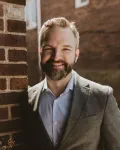Liver fibrosis is a progressive and potentially reversible condition that results from chronic liver damage, which can be caused by a variety of factors, including metabolic dysfunction-associated steatotic liver disease (MASLD), alcohol abuse, and viral hepatitis. MASLD affects a significant portion of the global population and can progress to metabolic dysfunction-associated steatohepatitis (MASH), leading to liver cirrhosis if left untreated. Given the prevalence of MASLD and its related conditions, the study of fibrosis and its regression has become crucial for developing therapeutic interventions. This review provides a detailed examination of experimental mouse models used to study liver fibrosis regression, both in vivo and ex vivo, highlighting their relevance, advantages, and limitations.
Liver Fibrosis and Fibrogenesis
Fibrogenesis is a wound-healing response to continuous liver damage, characterized by the deposition of extracellular matrix (ECM) by activated hepatic stellate cells (HSCs) and myofibroblasts. Various stimuli, including lipid overload and toxin exposure, can lead to fibrosis. The molecular processes underlying fibrosis are complex, but inflammation driven by reactive oxygen species plays a critical role. Importantly, fibrosis is not a static process; it is reversible under certain conditions, as inflammatory responses subside and ECM degradation occurs. Understanding these dynamics is essential for developing treatments that promote fibrosis regression.
Mouse Models for Studying Liver Fibrosis
Mouse models provide a valuable platform for studying liver fibrosis, especially in the context of human MASLD. The review categorizes models based on the method of fibrosis induction, such as diet-induced models (e.g., high-fat diets), genetic models, hepatotoxin-induced models, and models using biliary atresia or parasitic infections. These models vary in their ability to replicate human liver fibrosis and regression, each with distinct advantages and limitations.
For instance, while wild-type C57BL/6 mice on a high-fat diet (HFD) develop mild fibrosis, genetic modifications (e.g., LDL receptor knockout mice) and enhanced diets can accelerate fibrosis progression. Meanwhile, hepatotoxin-induced models using substances like carbon tetrachloride (CCl4) provide rapid fibrosis induction but do not fully replicate the metabolic impairments seen in humans. Despite these challenges, these models are instrumental in studying fibrosis regression after the removal of fibrosis-inducing stimuli.
Reversible Liver Fibrosis in Mouse Models
One of the critical areas of focus in the review is reversible fibrosis. Several mouse models exhibit fibrosis regression after the removal of the causative agent or through therapeutic interventions. The review highlights various methods to induce reversible fibrosis, including CCl4 withdrawal, diet modification, and genetic restoration techniques. While some models show near-complete regression, others display variable or incomplete fibrosis resolution, often reflecting the clinical variability seen in human patients.
For example, in CCl4-induced models, fibrosis regression can be nearly complete after four to eight weeks of CCl4 withdrawal, depending on the strain of mice used. In contrast, models involving diet-induced fibrosis often show partial regression, highlighting the difficulty in reversing metabolic dysfunction-induced liver damage.
Ex Vivo and In Vitro Models
In addition to in vivo studies, ex vivo and in vitro approaches provide controlled environments for studying fibrosis and its regression. Precision-cut liver slices (PCLS) and liver organoids have been developed to study fibrosis on a cellular level, allowing researchers to test the effects of anti-fibrotic compounds. These models offer a bridge between in vivo studies and clinical applications, although they lack the complexity of whole-organ interactions seen in living organisms.
Outlook
The future of liver fibrosis research lies in refining these models to more closely mimic human disease progression and regression. Technological advancements, such as non-invasive imaging and molecular markers, will enable better monitoring of fibrosis in real time. Furthermore, the development of organoids and PCLS that more accurately replicate human liver physiology may reduce the need for animal studies, while still providing valuable insights into fibrosis mechanisms.
Conclusions
Mouse models have significantly contributed to our understanding of liver fibrosis and its potential for regression. While no model perfectly replicates human disease, these experimental systems provide essential insights into the cellular and molecular processes involved. Future research will continue to refine these models, enabling the development of more effective treatments for liver fibrosis and its related conditions.
Full text
https://www.xiahepublishing.com/2310-8819/JCTH-2024-00212
The study was recently published in the Journal of Clinical and Translational Hepatology.
The Journal of Clinical and Translational Hepatology (JCTH) is owned by the Second Affiliated Hospital of Chongqing Medical University and published by XIA & HE Publishing Inc. JCTH publishes high quality, peer reviewed studies in the translational and clinical human health sciences of liver diseases. JCTH has established high standards for publication of original research, which are characterized by a study’s novelty, quality, and ethical conduct in the scientific process as well as in the communication of the research findings. Each issue includes articles by leading authorities on topics in hepatology that are germane to the most current challenges in the field. Special features include reports on the latest advances in drug development and technology that are relevant to liver diseases. Regular features of JCTH also include editorials, correspondences and invited commentaries on rapidly progressing areas in hepatology. All articles published by JCTH, both solicited and unsolicited, must pass our rigorous peer review process.
Follow us on X: @xiahepublishing
Follow us on LinkedIn: Xia & He Publishing Inc.
END









